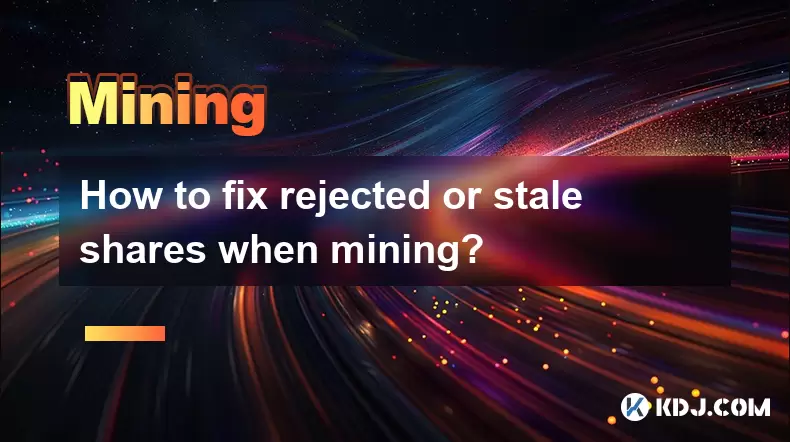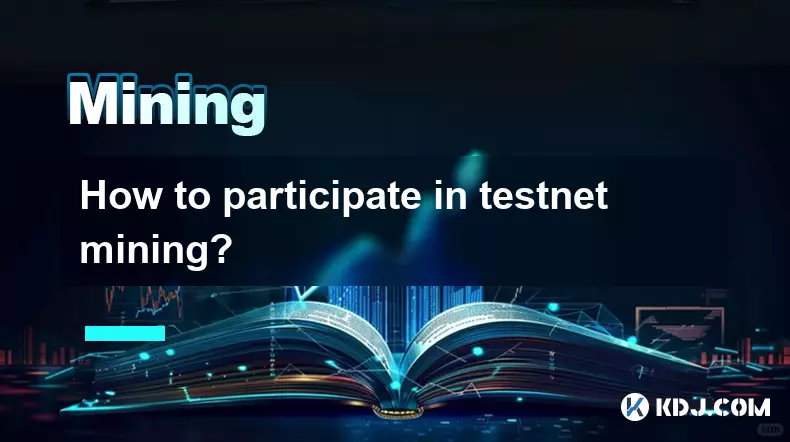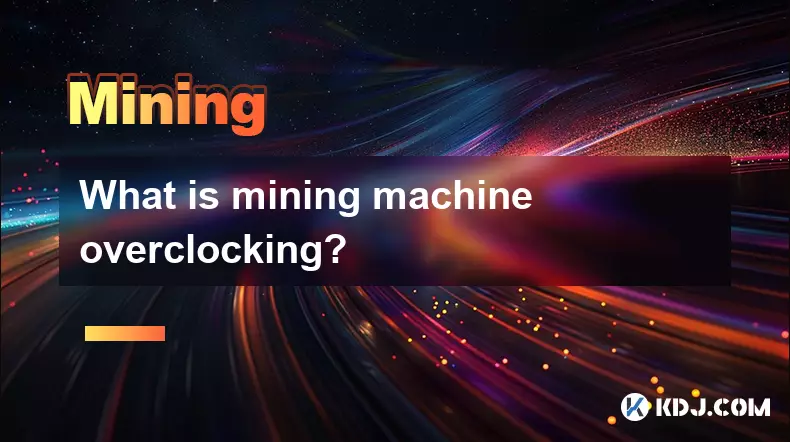-
 bitcoin
bitcoin $112195.049338 USD
2.42% -
 ethereum
ethereum $4124.915858 USD
2.81% -
 tether
tether $1.000570 USD
0.02% -
 xrp
xrp $2.861568 USD
2.25% -
 bnb
bnb $1000.346670 USD
3.04% -
 solana
solana $209.070819 USD
3.38% -
 usd-coin
usd-coin $0.999870 USD
0.02% -
 dogecoin
dogecoin $0.235379 USD
2.65% -
 tron
tron $0.335681 USD
-0.20% -
 cardano
cardano $0.803501 USD
3.38% -
 hyperliquid
hyperliquid $47.120881 USD
3.56% -
 chainlink
chainlink $21.501300 USD
3.44% -
 ethena-usde
ethena-usde $1.000571 USD
0.02% -
 avalanche
avalanche $29.793378 USD
3.62% -
 stellar
stellar $0.366964 USD
2.42%
How to fix rejected or stale shares when mining?
Rejected and stale shares reduce mining efficiency; ensure proper configuration, low latency, updated software, and stable hardware to keep rejection rates below 1%.
Aug 08, 2025 at 10:56 am

Understanding Rejected and Stale Shares in Cryptocurrency Mining
In cryptocurrency mining, a share represents a miner’s contribution to solving a block. When a mining pool is used, miners submit shares to prove their work. However, not all submitted shares are accepted. Rejected shares occur when the mining pool server refuses a share due to invalid data, incorrect formatting, or network issues. Stale shares happen when a share arrives too late—after the pool has already moved on to a new block. Both types reduce mining efficiency and lower potential rewards. Identifying the root cause is essential to resolving these issues.
Common Causes of Rejected and Stale Shares
Several factors can lead to rejected or stale shares. One primary cause is network latency. If your mining rig takes too long to communicate with the pool server, the share may arrive after the block has been solved, making it stale. Another issue is incorrect mining configuration. Misconfigured pool URLs, worker names, or passwords often result in rejected shares. Outdated mining software might not support current protocol standards, leading to compatibility problems. Hardware issues such as overclocking instability or GPU/CPU errors can also generate invalid computations. Lastly, pool server overload or maintenance can temporarily increase rejection rates.
Optimizing Network Connection to Reduce Latency
A stable and fast internet connection is crucial for minimizing stale shares. To improve network performance:
- Choose a mining pool server geographically closest to your location. Most pools offer multiple server endpoints; select the one with the lowest ping.
- Use a wired Ethernet connection instead of Wi-Fi to ensure stable bandwidth and reduce packet loss.
- Run a ping test to the pool server to check latency. For example, use the command
ping stratum+tcp://pool.example.comin your terminal. - Limit background applications that consume bandwidth, such as downloads or streaming services.
- Consider using a low-latency DNS provider like Google DNS (8.8.8.8) or Cloudflare (1.1.1.1) to speed up domain resolution.
Reducing latency ensures your shares reach the pool server in time, significantly decreasing the rate of stale submissions.
Correcting Mining Software Configuration
Improper configuration is a frequent cause of rejected shares. Ensure your mining software settings are accurate:
- Double-check the pool URL. A typo in the address (e.g.,
stratum+tcp://vsstratum://) can lead to rejection. - Verify your worker name and password. Some pools require a specific format, such as
username.workernameor a password field left blank. - Confirm the port number matches the pool’s recommended settings. Using an outdated or incorrect port can cause connection issues.
- Use the correct protocol. Modern pools often require
stratum+tcp://orstratum+ssl://for secure connections. - If using NiceHash, ensure the algorithm and region settings align with your hardware capabilities.
Recheck these settings in your mining software configuration file or command-line arguments. For example, in GMiner, your startup command should resemble:
miner --algo ethash --server stratum+tcp://eth.2miners.com:2020 --user YOUR_WALLET.WorkerName --pass xUpdating and Tuning Mining Hardware and Software
Outdated software can fail to process shares correctly. Always use the latest stable version of your mining software. Developers frequently release patches for bugs and compatibility issues. Visit the official GitHub or website of your miner (e.g., PhoenixMiner, T-Rex, NBMiner) to download updates.
For hardware:
- Avoid excessive overclocking. Pushing GPU memory or core clocks too high can cause computational errors, leading to invalid shares.
- Monitor temperatures using tools like MSI Afterburner or HWInfo. Overheating GPUs may throttle or produce faulty results.
- Enable ECC memory if using professional-grade GPUs like NVIDIA Tesla or AMD Pro series, as it reduces memory errors.
- For ASIC miners, ensure firmware is up to date and voltage settings are within safe limits.
Run a stress test for 15–30 minutes and observe the share rejection rate. If it remains high, gradually reduce overclock settings until stability improves.
Troubleshooting Pool-Side Issues
Sometimes the problem lies with the mining pool, not your setup. To diagnose:
- Check the pool’s status page or Discord channel for ongoing outages or maintenance.
- Monitor your rejection rate across multiple pools. If the issue persists on different pools, the problem is likely local.
- Try switching to a backup server provided by the same pool. For example, if
eu.pool.example.comis problematic, useus.pool.example.com. - Use multiple pools simultaneously with failover support in your mining software to maintain uptime.
Some pools display real-time statistics on rejected shares. Log in to your account dashboard and review recent submissions to identify patterns.
Frequently Asked Questions
What is an acceptable rejected share rate in mining?An acceptable rejected share rate is typically below 1%. Rates between 1% and 3% may indicate minor issues, while anything above 3% requires immediate investigation. High rejection rates directly reduce profitability.
Can firewall or antivirus software cause rejected shares?Yes. Overly aggressive firewall or antivirus settings can block or delay communication between your miner and the pool server. Add your mining software to the exception list and ensure outbound connections on common mining ports (e.g., 3333, 5555, 443) are permitted.
Why do I get stale shares even with low ping?Even with low ping, network jitter or temporary packet loss can delay share submission. Additionally, slow GPU processing times due to poor tuning or outdated drivers may cause shares to be generated too late. Optimize GPU intensity and ensure drivers are up to date.
Does using SSL/TLS encryption increase stale shares?Using stratum+ssl:// adds slight overhead due to encryption, which may marginally increase latency. However, the security benefits often outweigh the minimal delay. If you experience issues, test both SSL and non-SSL connections to compare performance.
Disclaimer:info@kdj.com
The information provided is not trading advice. kdj.com does not assume any responsibility for any investments made based on the information provided in this article. Cryptocurrencies are highly volatile and it is highly recommended that you invest with caution after thorough research!
If you believe that the content used on this website infringes your copyright, please contact us immediately (info@kdj.com) and we will delete it promptly.
- News, September 28th, Headlines: Crypto's Wild Ride
- 2025-09-29 20:45:13
- Altcoins, Investors, and Potential Gains: Riding the 2025 Crypto Wave
- 2025-09-29 20:45:13
- Citi Token Services: Revolutionizing Cross-Border Payments and Liquidity Management
- 2025-09-29 20:50:01
- JYAI Token Gears Up for Launch: LCX Exchange Listing Imminent
- 2025-09-29 20:50:01
- Prenetics, Bitcoin Holdings, and Corporate Bitcoin: A New Era?
- 2025-09-29 20:25:11
- Swift, Altcoins, and Shifting Sands: Diving into Crypto's Latest Details
- 2025-09-29 20:25:11
Related knowledge

The difference between staking and mining
Sep 24,2025 at 05:18am
Understanding Staking in the Cryptocurrency Ecosystem1. Staking involves holding funds in a cryptocurrency wallet to support the operations of a block...

How to participate in testnet mining?
Sep 22,2025 at 09:18am
Understanding Testnet Mining in the Crypto Ecosystem1. Testnet mining is a method used by blockchain developers to simulate real-world conditions on a...

How to dispose of abandoned mining machines?
Sep 19,2025 at 08:19pm
Assessing the Condition of Abandoned Mining Rigs1. Begin by inspecting each mining machine for visible damage, corrosion, or missing components. Machi...

How to identify high-quality mining pools?
Sep 21,2025 at 03:19pm
Reputation and Track Record1. A mining pool’s reputation is built over time through consistent performance and transparency. Pools that have operated ...

Advantages of decentralized mining pools
Sep 20,2025 at 04:36pm
Enhanced Security and Resistance to Censorship1. Decentralized mining pools operate on blockchain-based smart contracts, eliminating the need for a ce...

What is mining machine overclocking?
Sep 21,2025 at 07:19pm
Understanding Mining Machine Overclocking1. Mining machine overclocking refers to the process of increasing the operating frequency of a cryptocurrenc...

The difference between staking and mining
Sep 24,2025 at 05:18am
Understanding Staking in the Cryptocurrency Ecosystem1. Staking involves holding funds in a cryptocurrency wallet to support the operations of a block...

How to participate in testnet mining?
Sep 22,2025 at 09:18am
Understanding Testnet Mining in the Crypto Ecosystem1. Testnet mining is a method used by blockchain developers to simulate real-world conditions on a...

How to dispose of abandoned mining machines?
Sep 19,2025 at 08:19pm
Assessing the Condition of Abandoned Mining Rigs1. Begin by inspecting each mining machine for visible damage, corrosion, or missing components. Machi...

How to identify high-quality mining pools?
Sep 21,2025 at 03:19pm
Reputation and Track Record1. A mining pool’s reputation is built over time through consistent performance and transparency. Pools that have operated ...

Advantages of decentralized mining pools
Sep 20,2025 at 04:36pm
Enhanced Security and Resistance to Censorship1. Decentralized mining pools operate on blockchain-based smart contracts, eliminating the need for a ce...

What is mining machine overclocking?
Sep 21,2025 at 07:19pm
Understanding Mining Machine Overclocking1. Mining machine overclocking refers to the process of increasing the operating frequency of a cryptocurrenc...
See all articles










































































